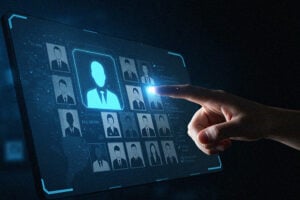You’ve seen multiple recessions, a horrible pandemic, global wars that disrupted supply chains, trade wars, and protectionism—but I’ll wager that you’ve never seen a shift in the job market as massive as the one we’re going through right now.
And 100% of this shift is because of AI.
According to the World Economic Forum, 2 out of 5 core job skills will change by 2030, mostly due to AI and data-driven automation [1]. Business Insider reports that jobs requiring AI skills are growing 30% quicker than most roles on LinkedIn [2].
The shift is tectonic, and this isn’t hyperbole or “prime-time sensationalism.” The pace of change is lightning-fast, and by now, everybody knows that the cost of falling behind is catastrophic. For proof, reach out to those who’ve lost their jobs due to AI and ask them if they saw it coming.
Active and strategic upskilling is the new norm. What used to be considered “upskilling” five years ago—taking a short course, gaining cursory familiarity, or attending a weekend webinar—is no longer effective. In today’s AI-driven job market, you need a focused, aggressive, and ongoing plan to upgrade your skills. Because the truth is that roles are evolving faster than job descriptions, and if you’re not actively upskilling, you’re rapidly becoming obsolete.
I have split this article into two parts. Part 1 (what you’re reading now) covers the three must-have hard skills. Part 2 will cover the soft skills that turn technical expertise into leadership presence, business impact, and long-term career growth.
I’ve selected these skills based on five major reports released in the past year—from the World Economic Forum, LinkedIn, McKinsey, Coursera, and Business Insider—combined with what I see every day as an executive recruiter and job search coach.
Across all these reports, the message is loud and clear: if you want to thrive, you need two sets of skills—
- A deep level of comfort with a gamut of AI tools to improve business efficiency—the hard skills
- And mastery of core human skills like critical thinking and communication—the soft skills
One without the other isn’t enough. Companies will prefer those who can work expertly with AI and think and lead like creative and emotionally intelligent humans.
On the surface, my argument seems obvious, given how AI tools have swarmed into our lives and, of course, the constant news reports about all things AI—but the challenge isn’t in accepting and understanding this shift. The real challenge lies in identifying and acquiring the key hard and soft skills that future-proof your career.
That’s why it’s more important than ever to learn how to truly work with AI. Three out of four companies are already using some form of AI, but most managers say they still don’t fully understand how it works. Today, upskilling is more about not falling behind than about getting ahead.
If you’re employed with a data-driven organization—and who isn’t—then the answer to “Do you use AI?” isn’t “Yes, I use ChatGPT to write emails and reports.” That ship has long sailed. The new norm is to use AI to improve your department’s efficiency, glean insights that humans would miss, and persuade stakeholders to buy into your arguments and vision.
Hard Skills: What To Learn On The Tech Side
So, what exactly should you be learning to stay ahead in an AI-first job market? I’ve always taken a hard-skills-first approach—because your primary value to the marketplace is determined by your technical capabilities. The stronger your technical skill set, the more leverage you have—whether you’re negotiating a raise, leading a team, or future-proofing your career.
We’ll look at three hard skills: AI-augmented productivity, no-code workflow design, and data sense-making. Each one builds on the last—and together, they’ll make you incredibly hard to replace.
1. AI-Augmented Productivity & Prompt Craft
Arguably one of the most vital skills today is knowing how to ask, steer, and QC (quality control) LLM tools such as ChatGPT, Claude, Gemini, Microsoft Copilot, etc. Once you become skilled at this, you can quickly draft first passes, analyse and summarise all kinds of research, and even build complex dashboards and slide decks.
“AI and Big Data” tops the WEF’s list of the fastest-growing skills through 2030—and as I pointed out earlier, employers expect 39% of core skills to change over the next five years. Generative AI can double or even triple your output on content-heavy tasks—including brainstorming and writing reports. The demand for this skill is clear: LinkedIn called prompt engineering [3] “the surge skill of 2024,” and jobs mentioning it have grown 16x YoY.
Actions
- Daily 10-minute habit: Rewrite one email or paragraph using a Gen AI tool. Then compare and refine the prompt until the output is stronger than your original. Experiment with tone—make it more persuasive, concise, urgent, or even humorous (though Gen AI humor can get cheesy, so use your best judgment).
- “Shot/Chain/Role” template: When you prompt, combine three of the most reliable prompt-engineering techniques in one template. Include the shot (context), chain (step-by-step thinking), and role (e.g., “act as a hiring manager”) in every prompt.
- Courses: OpenAI offers various educational events such as “Writing in the Age of AI” or “”. There at least a dozen more on this page. Coursera also offers popular courses: Introduction to Generative AI by Google Cloud [10]; Generative AI for Everyone by DeepLearning.AI [11]; and IBM Generative AI Engineering Professional Certificate [12].
2. No-Code Workflow Design
The competition for market share is intense and every company out there—startup or conglomerate—is chasing efficiency. To help your company improve its efficiency, you should automate as many tasks as possible. The goal is to free up your time so you can focus on strategic work instead of repetitive administrative tasks. I speak from experience when I say that automating mundane tasks is euphoric. Once you get the hang of it, you’ll never look back.
You don’t need to learn coding to start automating your work—no-code and low-code tools are everywhere. Using like Zapier, Make, and Airtable, and with a bit of instruction, you can build custom workflows that connect popular apps.
In fact, the no-code/low-code market is set to grow from a “modest” $8 billion in 2019 to $187 billion by 2030 (31% CAGR). Gartner reports that by 2025 [9], 70% of new business apps will be built using no-code tools. In Zapier’s user survey [8], 90% said their company grew faster after adopting no-code automation.
Companies love people who improve efficiency. Often, CEOs are brought in with the primary objective of making the organization more efficient—and that’s also why they’re paid the big bucks.
Take time this weekend to start exploring—regardless of your function or workflow, there are people in your field already automating routine tasks. Start small and experiment—once you see the massive benefits, you’ll be hooked.
Actions
- One-hour rule: Pick a single frustration (for example, copying leads from Facebook Ads to a sheet) and challenge yourself to automate it within 60 minutes. You can use the Shot/Chain/Role template to extract—and qualify—a process from ChatGPT.
- Start with templates: For the example above, Zapier’s “Lead Management” or Make’s “Marketing Automation” blueprints can help. As you go deeper, explore more advanced tools like Airtable and n8n. There are courses, subreddits, and YouTube tutorials for just about every scenario in every function.
- Document time savings: Log the minutes you eliminate so that you have something solid to bring back to your superiors. Which senior leader can ignore an automation process that gives back five hours a week for strategic work?
3. Data Sense-Making & Storytelling
This is the big one—and everything leads to it. We’re surrounded by data, and companies need people who can understand the numbers and make smart, data-driven decisions. Equally important, they need people who can turn those numbers into clear, convincing stories that persuade both internal and external stakeholders. If you can do both, you become valuable and hard to replace.
If you’ve taken my Resume Writing and Job Search course, you know I argue strongly in favour of acquiring business acumen. And data literacy is a big part of that.
You don’t need to be a data expert, but you should know how to read charts, interpret dashboards, and ask the right questions. Every important business decision—pricing, hiring, or marketing—is based on numbers. To paraphrase Peter Drucker: “You can’t improve what you don’t measure.”
Reading a dashboard, asking “Is this signal or noise?”, and turning numbers into decisions are skills you absolutely must acquire.
According to DataCamp’s 2025 State of Data & AI Literacy Report [4], 83% of leaders report faster decision-making as a result of data and AI literacy efforts, with 38% experiencing significantly faster decisions. InformationWeek has even stated [5] that the definition of data literacy now explicitly includes AI output critique—that is, knowing when a model’s chart is reliable or misleading.
You’ve heard the term “AI hallucinations”—it refers to when AI confidently gives false or misleading information. Critically reviewing AI-generated dashboards and summaries is now an essential skill, because acting on flawed data can exact a steep price.
Actions
- Analytical thinking using the 3-question loop: Every time you see a chart, ask yourself: “What is this trying to show?”, “Where did the numbers come from?”, “What should we do or check next?” I won’t belabour the point—if you can’t read between the numbers, you’re already behind in any data-driven workplace.
- Chart-reading habit: Pick a website that shares simple charts—like: (topics like health, economy, education) or (topics like inflation, GDP, interest rates). My personal favourite is VisualCapitalist [13]. Look at one chart a week for 20 minutes and explain it like you’re talking to a friend. Then run it through ChatGPT and compare answers. That second step is where the real learning happens.
- Storytelling sprint: There are several excellent templates, but you can start with the McKinsey pyramid—headline, three insights, one action—on any KPI you present.
Once you have mastered how to read charts and dashboards, filter signal from noise, and identify the decisions to take, you’ll rapidly accelerate your data-driven storytelling skills.
Final Thoughts
These three hard skills—AI-augmented productivity, no-code workflow design, and data sense-making—are no longer “nice-to-haves.” They’re the new foundation of professional competence in an AI-driven world. Without them, you risk becoming “less than”: less useful to your team, less visible to leadership, and less competitive in the job market.
But technical skills alone won’t take you far. You still need to influence, persuade, and lead—skills that machines can’t replicate. Part 2 of this article will explore the soft skills that matter just as much as the hard ones. In the end, it’s your human capabilities that turn knowledge into impact and competence into career growth. If hard skills keep you in the game, soft skills help you win it.
References
[1] World Economic Forum. *Future of Jobs Report 2025*. https://www.weforum.org/publications/the-future-of-jobs-report-2025
[2] Business Insider. *AI Skills Are Fueling Job Growth on LinkedIn*. https://www.businessinsider.com/new-job-build-ai-skills-help-change-roles-employers-hiring-2025-1
[3] LinkedIn. *Most In-Demand Skills 2024*. https://www.linkedin.com/business/talent/blog/talent-strategy/linkedin-most-in-demand-hard-and-soft-skills
[4] DataCamp. *State of Data Literacy Report 2025*. https://www.datacamp.com/blog/introducing-the-state-of-data-and-ai-literacy-report-2025
[5] InformationWeek. *AI Hallucinations and the New Definition of Data Literacy*. https://www.informationweek.com/data-management/what-data-literacy-looks-like-in-2025
[6] McKinsey. *The State of AI: How Organizations Are Rewiring to Capture Value*. https://www.mckinsey.com/capabilities/quantumblack/our-insights/the-state-of-ai
[7] Coursera. *Global Skills Report 2024*. https://www.coursera.org/skills-reports/global
[8] Zapier. *Automation Trends Report 2023*.
https://zapier.com/blog/no-code-report/
[9] Gartner. *Gartner Predicts 70% of Business Apps Will Use No-Code by 2025*. https://www.gartner.com/en/newsroom/press-releases/2021-11-10-gartner-says-cloud-will-be-the-centerpiece-of-new-digital-experiences
[10] Google Cloud. *Introduction to Generative AI (Course)*. https://www.coursera.org/learn/introduction-to-generative-ai
[11] DeepLearning.AI. *Generative AI for Everyone (Course)*. https://www.coursera.org/learn/generative-ai-for-everyone
[12] IBM. *Generative AI Engineering Professional Certificate*. https://www.coursera.org/professional-certificates/ibm-generative-ai-engineering
[13] Visual Capitalist. https://www.visualcapitalist.com






